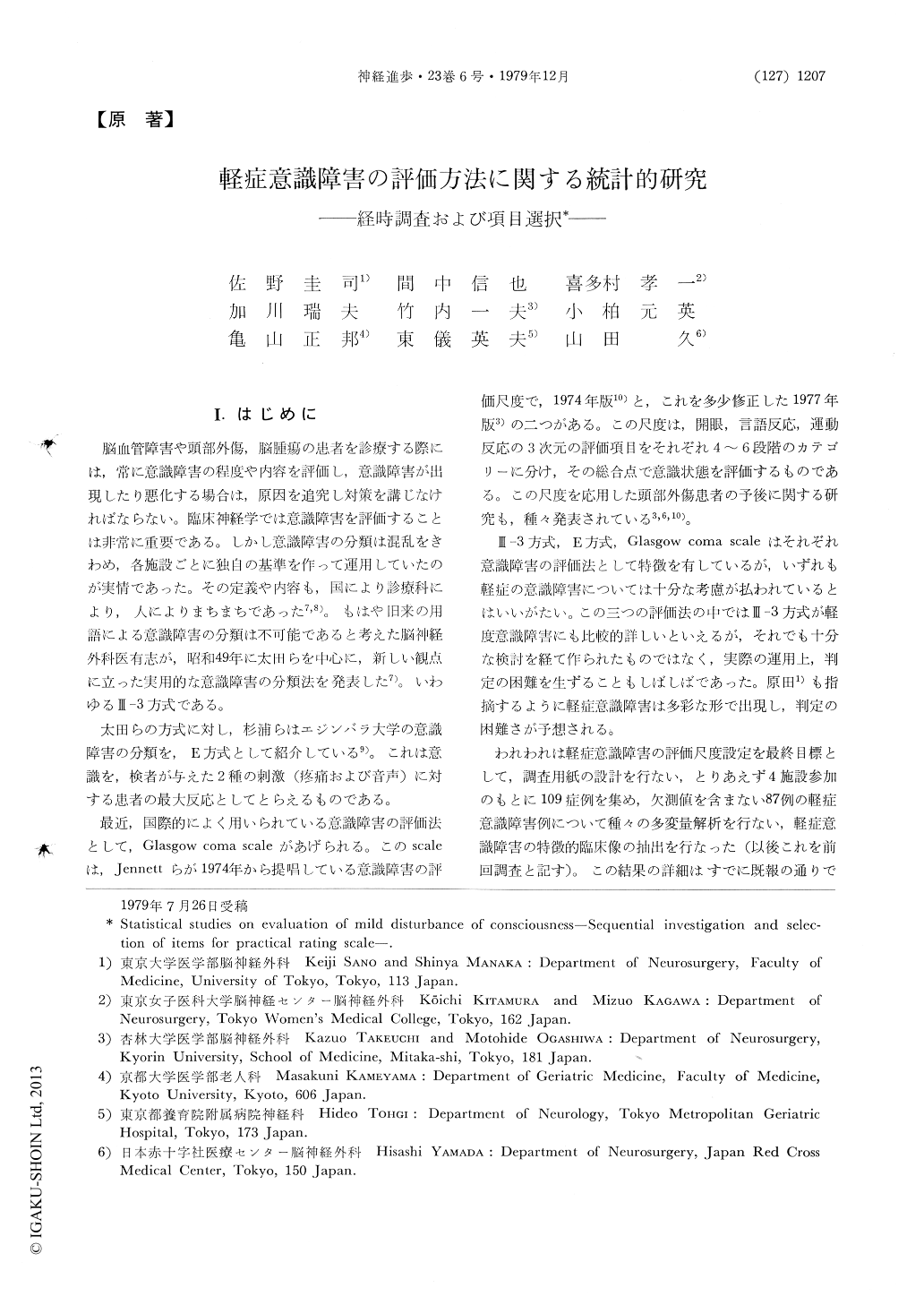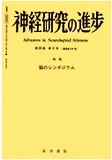Japanese
English
- 有料閲覧
- Abstract 文献概要
- 1ページ目 Look Inside
I.はじめに
脳血管障害や頭部外傷,脳腫瘍の患者を診療する際には,常に意識障害の程度や内容を評価し,意識障害が出現したり悪化する場合は,原因を追究し対策を講じなければならない。臨床神経学では意識障害を評価することは非常に重要である。しかし意識障害の分類は混乱をきわめ,各施設ごとに独自の基準を作って運用していたのが実情であった。その定義や内容も,国により診療科により,人によりまちまちであった7,8)。もはや旧来の用語による意識障害の分類は不可能であると考えた脳神経外科医有志が,昭和49年に太田らを中心に,新しい観点に立った実用的な意識障害の分類法を発表した7)。いわゆるIII−3方式である。
太田らの方式に対し,杉浦らはエジンバラ大学の意識障害の分類を,E方式として紹介している9)。これは意識を,検者が与えた2種の刺激(疼痛および音声)に対する患者の最大反応としてとらえるものである。
Abstract
As reported by previous study, mild disturbance of consciousness (MDOC) is composed by important two factors; namely the first is performance factor and the second is verbal factor. The reproducibility of two factors composing MDOC was investigated on more multiple clinics than previous study and sequential rating of MDOC was performed. The same protocol as the previous study was used. Finally one hundred and ninety two cases with MDOC were evaluated by neurosurgeons and neurologists belonging to 14 clinics. Checking of MDOC were carried out two or three times at the interval of a week.

Copyright © 1979, Igaku-Shoin Ltd. All rights reserved.


